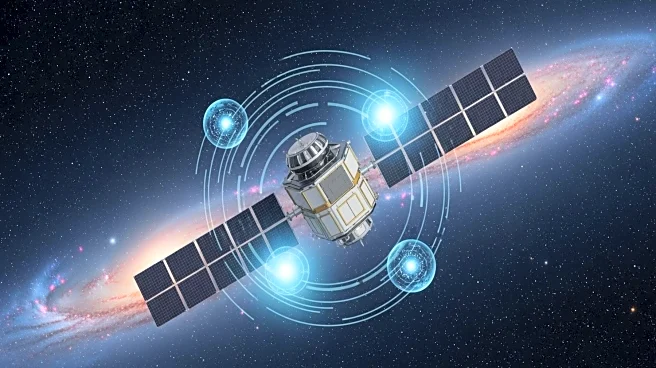What's Happening?
The Skynet-1A military satellite, launched in 1969, has been mysteriously moved from its original geostationary orbit over Africa to a new position over the Americas. This unexpected shift has raised questions
about the satellite's movement, as it was previously considered inert due to hardware failure. Experts suggest that onboard thrusters, thought to be defunct, may have been activated, indicating possible external intervention. The satellite's relocation poses potential risks to other satellites in its new orbit, highlighting the challenges of managing space debris.
Why It's Important?
The movement of Skynet-1A underscores the complexities of space security and the management of aging satellites. As space becomes increasingly congested, the risk of collisions with dormant satellites like Skynet-1A grows, potentially leading to significant debris and damage to active satellites. This situation highlights the need for robust international policies and technologies to address space debris and ensure the safety of space operations. The incident also raises concerns about the security of satellite systems and the potential for unauthorized manipulation.
What's Next?
Efforts to address space debris are underway, with the UK Space Agency collaborating on missions to remove defunct satellites. These initiatives involve testing technologies like robotic arms and drag sails to de-orbit dead satellites. The Skynet-1A case may accelerate these efforts, prompting further investment in debris removal technologies. Additionally, ongoing investigations aim to uncover the circumstances surrounding the satellite's movement, potentially leading to policy changes in satellite management and security.
Beyond the Headlines
The Skynet-1A incident highlights the ethical and legal dimensions of space exploration, particularly regarding the responsibility for space debris. As countries continue to launch satellites, the long-term impact on the orbital environment becomes a pressing concern. The situation also reflects the historical context of Cold War-era satellite operations and the evolving nature of space governance. Addressing these challenges requires international cooperation and a commitment to sustainable space practices.













